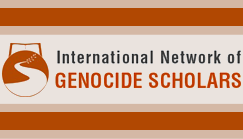Event Title
Counting, Disinterment, Reburial: dealing with the victims of communism in Bulgaria
Submission Type
Paper
Abstract
In 1991, slightly more than a year after the political change opening the way to the democratic opposition to power, Bulgarians were taken aback by the first large-scale action aiming at uncovering and bringing to public knowledge the atrocities committed by the communist regime since the autumn of 1944 and throughout the 1960s. On the eve of a decisive legislative election, a map of Bulgaria densely covered with sculls was released: the sculls marked several dozens of places where camps, mass graves and various spots of extrajudicial executions were located. This shocking image aroused a variety of reactions, from huge anti-communist protests to denial: along with “recounting the dead”, more general issues of memory and history became subject to hot debates. More than a quarter of century after this action, neither historians nor political leaders agree over the numbers of victims of the “Bulgarian communism”: exhumations are rare, and reburials remain exceptions. This paper proposes an overview of the debate and the main trends of action towards uncovering and dignifying the victims by giving them proper funeral. Three case studies sit at its core will help to scrutinize the changing politics of dead bodies in the 1990s and the 2000s, and argue about specific difficulties for constructing a memory of communism in post-socialist Bulgaria.
Counting, Disinterment, Reburial: dealing with the victims of communism in Bulgaria
In 1991, slightly more than a year after the political change opening the way to the democratic opposition to power, Bulgarians were taken aback by the first large-scale action aiming at uncovering and bringing to public knowledge the atrocities committed by the communist regime since the autumn of 1944 and throughout the 1960s. On the eve of a decisive legislative election, a map of Bulgaria densely covered with sculls was released: the sculls marked several dozens of places where camps, mass graves and various spots of extrajudicial executions were located. This shocking image aroused a variety of reactions, from huge anti-communist protests to denial: along with “recounting the dead”, more general issues of memory and history became subject to hot debates. More than a quarter of century after this action, neither historians nor political leaders agree over the numbers of victims of the “Bulgarian communism”: exhumations are rare, and reburials remain exceptions. This paper proposes an overview of the debate and the main trends of action towards uncovering and dignifying the victims by giving them proper funeral. Three case studies sit at its core will help to scrutinize the changing politics of dead bodies in the 1990s and the 2000s, and argue about specific difficulties for constructing a memory of communism in post-socialist Bulgaria.





Comments
View the agenda item.
View Galia Valtshinova's bio.